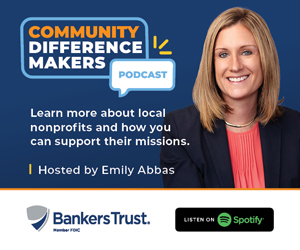Small employers consider strategies for 2016 health plans

Many small businesses will again have tough decisions to make as open enrollment season begins this fall. Adding to the complexity is a change in the federal health law’s definition of what constitutes a “small group.”
Effective in 2016, – unless President Obama signs the PACE Act that would shift decision to state insurance regulators – businesses with between 51 and 100 employees will be subject to the same rules that now apply to companies with up to 50 employees, which could encourage a lot of businesses to shift into various types of self-insurance models, said Joe Stopulos, an account executive with Holmes Murphy & Associates Inc.
“There’s change coming, and for the most part, it’s not good,” Stopulos told a group of about 50 benefit administrators during a forum Holmes Murphy held recently for small businesses.
The biggest change for businesses with 51-100 employees is that they’ll be subject to “community rating” rules by insurance companies, meaning that only certain demographic information — age, area and family size — but not health status, can be used to set their premium rates. The effect of community rating has been to increase what had been lower premiums for healthier groups and to decrease high premiums for less-healthy groups, compressing the rate structure toward the middle.
Currently, the vast majority of small businesses obtain health coverage through traditional “fully insured” plans offered by carriers. However, an increasing number of small employers will likely consider moving from fully insured plans to some form of self-funded insurance plan in 2016 to avoid significant increases in their health insurance premiums, Stopulos said.
Holmes Murphy has already calculated premium increases as high as 60 percent for some small groups if they stay with the same plan. At the same time, other groups are seeing as much as 20 percent reductions in rates. “It’s going to vary dramatically,” Stopulos said. Generally, groups with the lowest premiums are tending to see the largest increases, and those with higher premium levels are seeing small percentage increases, he said.
“In the individual market, the pool of people to insure became unhealthy due to a large number of previously uninsured people entering the market for the first time to obtain health coverage,” Stopulos noted. “On the other hand, the small-group market is tending to become unhealthier because healthier people are fleeing to lower-cost plans.”
Because there are fewer healthier people in the remaining pool of people to be insured, costs tend to go up because of higher claims and fewer healthy people to spread those costs over, he said.
For small businesses that have “really healthy employees,” a model known as hybrid self-funding could be a good option.
“Carriers are very much cherry-picking healthy groups for hybrid self-funding,” Stopulos said. “Hybrid self-funding looks, smells and feels like fully insured. … It is a good stair step to self-insurance.”
Stopulos said the most important thing to understand about hybrid self-funding is that it’s a fully underwritten product, which means it’s 100 percent based on employees’ health risks. “So if you have any bad risk, they’re not going to give you a quote.”
Another option for small businesses is to pool their risks with other small businesses under the “captive” model.
“The biggest advantage of captive plans is that you now are spreading your risk with other like-minded employers — you utilize your ability to become a larger group with a more predictable risk with other employers who want to swim in a cleaner pool,” Stopulos said. “I think captive will become a sizable play just because of the tools that are built into it — you’re spreading the risk of doing it with a lot of the wellness activities — it’s all built into the plan.”
Of course, small businesses will have to weigh the higher financial risk that self-insuring carries, and they’re increasingly recognizing the return on investment that wellness programs can have in mitigating those risks, he said.
“Previously it didn’t make sense (to spend money on wellness initiatives), but if I’m paying 100 percent of the health cost, then there’s a lot of incentive to do that,” he said. “Then the investment can be seen on the CFO’s side.”








